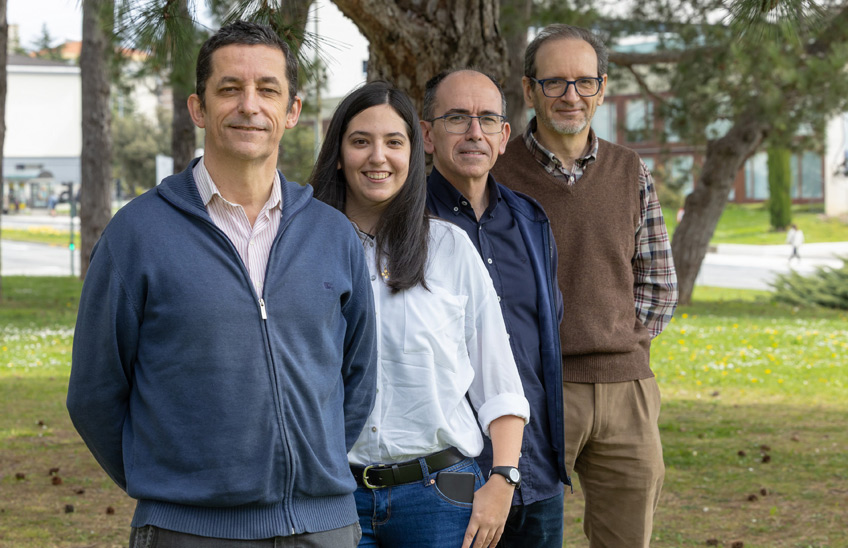A research from the BIOMA Institute discovers an increase in the presence of pollutants in European forest basins
The research has revealed an upward trend of mercury, lead and cadmium in forest soils in Europe

13 | 02 | 2025
The water quality of forest basins is an indicator core topic of the environmental status of a region. These may be exposed to heavy metal contamination due to human activity and atmospheric changes. A recent study published in Environmental Pollution , in which the Biodiversity and Environment Institute BIOMA of the University of Navarra has collaborated, has analyzed the temporal trends of these pollutants in various water courses of forest basins in Europe , revealing how factors such as climate change have influenced their concentrations over time.
The study analysed the evolution of mercury (Hg), lead (Pb) and cadmium (Cd) concentrations in 27 European rivers and streams between 2000 and 2020. The results show that, although in the early stages of the 21st century decreases in the concentration of these metals were observed due to the reduction of industrial and atmospheric emissions, in recent years the trend seems to be reversing in some points.
“This phenomenon could be due to climate change, which acidifies the soil and accelerates the accumulation of subject organic, generating a gradual release of contaminants that had accumulated over time,” says David Elustondo , director scientist of the Biodiversity and Environment Institute BIOME.
The BIOMA Institute has a sampling plot in Señorío de Bertiz , the only station in Spain of the 56 stations spread throughout Europe by the ICP Integrated Monitoring Program. In this Natural Park , the presence of heavy metals has been increasing in the last decade , due to the predominant siliceous soil in the area, composed of slate and schist, which has a high rate of heavy metals, and the proximity to the Basque Country, a region where metallurgy abounds. This abundance of heavy metals would have been mobilized by the climatic factors mentioned above, slowly releasing these toxic compounds into our ecosystems.
The network ICP Integrated Monitoring has 21 researchers from 10 different institutions carrying out these measurements in Norway, Finland, Sweden, Austria, Czech Republic, Lithuania and Spain . Thanks to this work It has been possible to detect this widespread increase in heavy metal levels in European basins. “The findings of this study research “They underline the need for continuous and detailed monitoring of our ecosystems,” says Elustondo. Understanding how heavy metals evolve in these environments will not only help protect the biodiversity of European rivers and forests, but will also allow for the development of more effective strategies for the management water quality and the conservation of our most vulnerable ecosystems.
reference letter bibliographic
Karin Eklöf, Claudia von Brömssen, Brian Huser, Staffan Åkerblom, Algirdas Augustaitis, Hans Fredrik Veiteberg Braaten, Heleen A. de Wit, Thomas Dirnböck, David Elustondo, Ulf Grandin, Adéla Holubová, Sirpa Kleemola, Pavel Krám, Lars Lundin, Stefan Löfgren, Hampus Markensten, Filip Moldan, Gunilla Pihl Karlsson, Pernilla Rönnback, Salar Valinia, Jussi Vuorenmaa,
Trends in mercury, lead and cadmium concentrations in 27 European streams and rivers: 2000–2020,
Environmental Pollution,
Volume 360,
2024,
124761,
ISSN 0269-7491,
https://doi.org/10.1016/J.ENVPOL.2024.124761




